Hola language learners! If you’re excited about learning Spanish, you’ve come to the right place.
In this guide, I’m going to share my top list of best books for learning Spanish that will help you at every step of your learning.
Whether you’re just starting or you already know a bit, our list has something for everyone.
Let’s explore the world of stories and words that will make learning Spanish a great experience.
Ready to begin?
Why Should You Learn Spanish By Reading Books?
You can learn Spanish in lots of ways, such as by listening to Spanish podcasts or learning through Spanish learning apps.
Learning Spanish through books however is also a great way to build your vocabulary, understand how words are used in real-life situations, and get a handle on grammar in a practical way.
It’s not just about language skills – reading Spanish literature also gives you insights into Hispanic cultures, helping you appreciate their traditions and viewpoints.
Books cater to different learning levels, from beginners to advanced learners, making it a personalized journey based on your interests.
As you progress, you not only improve your language skills but also become better at understanding what you read, making it a fun and effective way to learn Spanish.
21 Best Books for Learning Spanish for Every Learning Level
I’ve done a lot of research on what the best books for learning Spanish are for all levels and created a list of only the best books.
Let’s get right into it.
Best Books for Learning Spanish as a Beginner
Starting learning Spanish as a beginner can be exciting and challenging, but the right books can make the process smoother and more enjoyable. Here are five of my highly recommended books tailored for those starting their Spanish language adventure:
1. Easy Spanish Step-By-Step by Barbara Bregstein

“Easy Spanish Step-By-Step” is a fantastic resource for beginners, offering a systematic and approachable guide to learning Spanish. The book breaks down complex concepts into manageable steps, covering essential grammar, vocabulary, and practical phrases. It’s designed to build a strong foundation for conversational Spanish, making the learning process accessible and enjoyable for new learners.
2. Madrigal’s Magic Key to Spanish by Margarita Madrigal
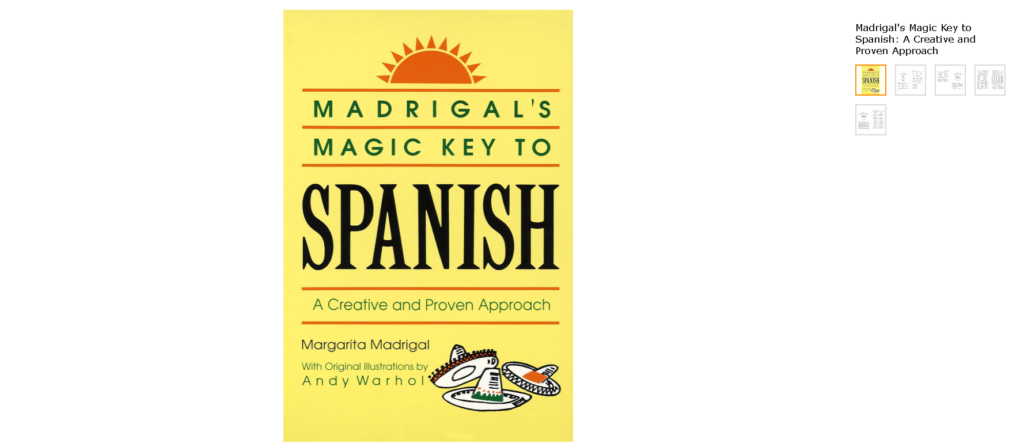
Considered a classic in language learning, “Madrigal’s Magic Key to Spanish” employs a unique method to enhance memorization. The book simplifies intricate grammar rules and focuses on practical language application. Its unique approach makes it an excellent choice for beginners seeking a clear and memorable introduction to the Spanish language.
3. Learn Spanish for Adult Beginners: 3 Books in 1 by Explore ToWin
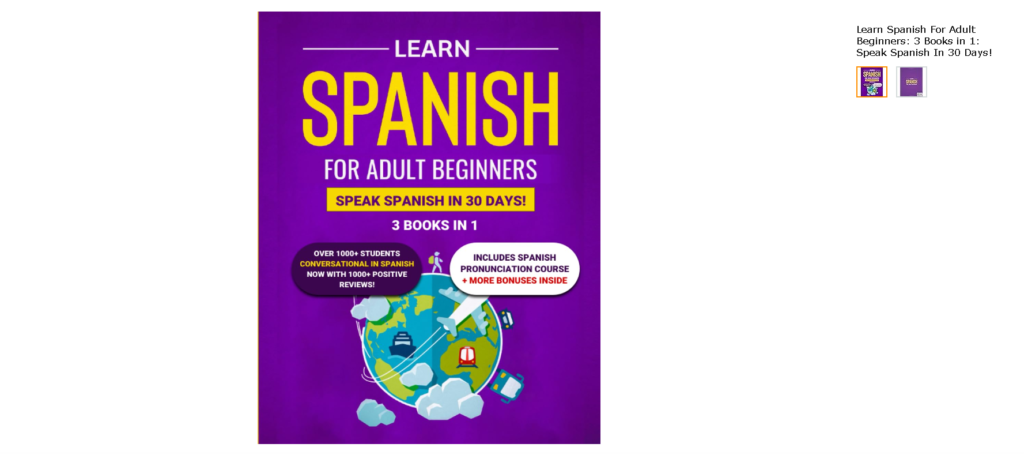
Tailored specifically for adult learners, “Learn Spanish for Adult Beginners: 3 Books in 1” offers a comprehensive approach to language acquisition. Encompassing three books in one, it covers vocabulary building, basic grammar explanations, and essential conversational phrases. This all-in-one guide is perfect for those looking for a well-rounded resource to kickstart their Spanish learning journey.
4. Easy Spanish Phrase Book by Pablo Garcia Loaeza
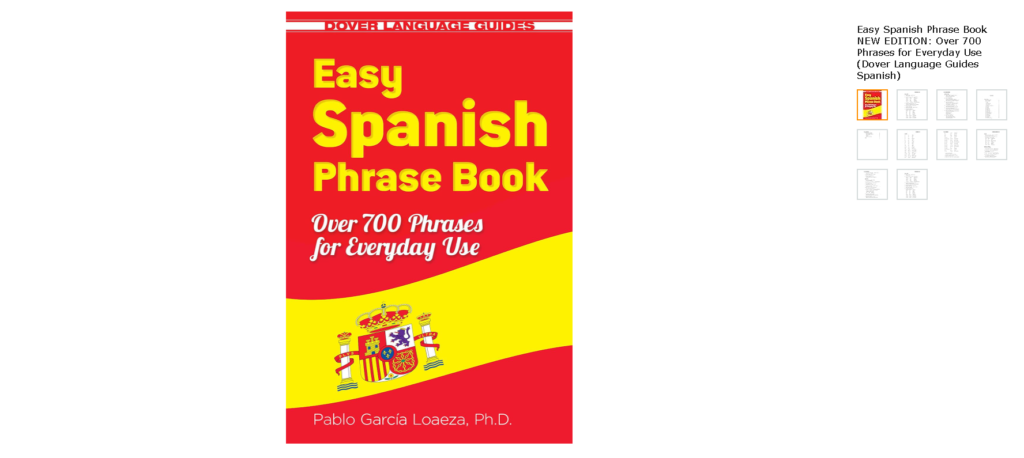
For quick and practical language use, the “Easy Spanish Phrase Book” is an invaluable companion. Packed with 700 commonly used phrases and expressions, this book is designed to help beginners navigate real-life conversations with ease. Its user-friendly format makes it a handy reference for everyday situations, ensuring learners can communicate effectively in various contexts.
5. Spanish for Dummies by Cecie Kraynak

Part of the popular “For Dummies” series, “Spanish for Dummies” is a user-friendly guide that covers the fundamentals of Spanish grammar, pronunciation, and vocabulary. It adopts an easy-to-understand approach, making it an ideal starting point for beginners. With clear explanations and practical examples, this book provides a solid foundation for straightforwardly learning Spanish.
Best Books for Learning Spanish Through Short Stories
Learning Spanish through short stories is a fun and effective way to get better at the language by experiencing it in different situations. Here are five great books for people who want to improve their Spanish through interesting short stories:
6. Short Stories in Spanish for Beginners by Olly Richards
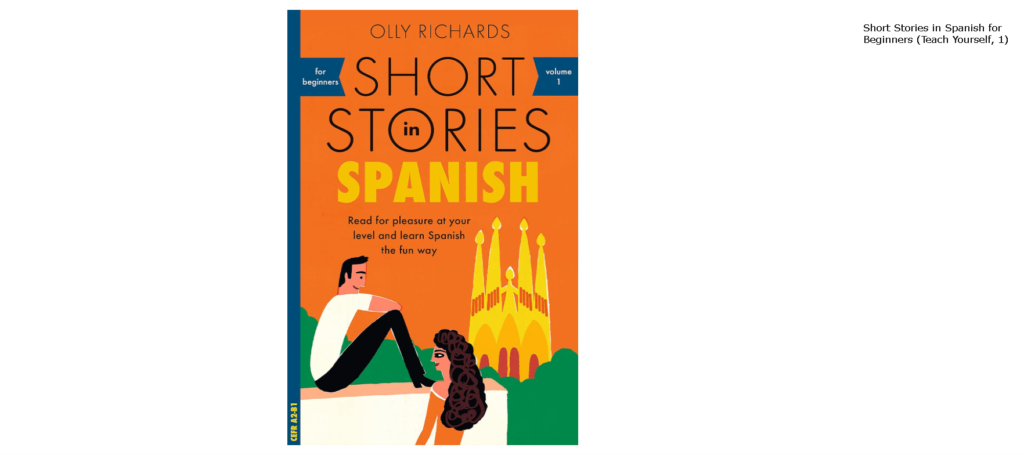
Tailored for those just starting their Spanish journey, “Short Stories in Spanish for Beginners” offers a delightful collection of simple yet engaging narratives. The stories are crafted with beginners in mind, introducing key vocabulary and basic language structures in a context that is both enjoyable and accessible. This book provides a gentle entry point into the world of Spanish storytelling, making language learning a pleasurable experience for novice learners.
7. Spanish Short Stories for Beginners by Lingo Mastery
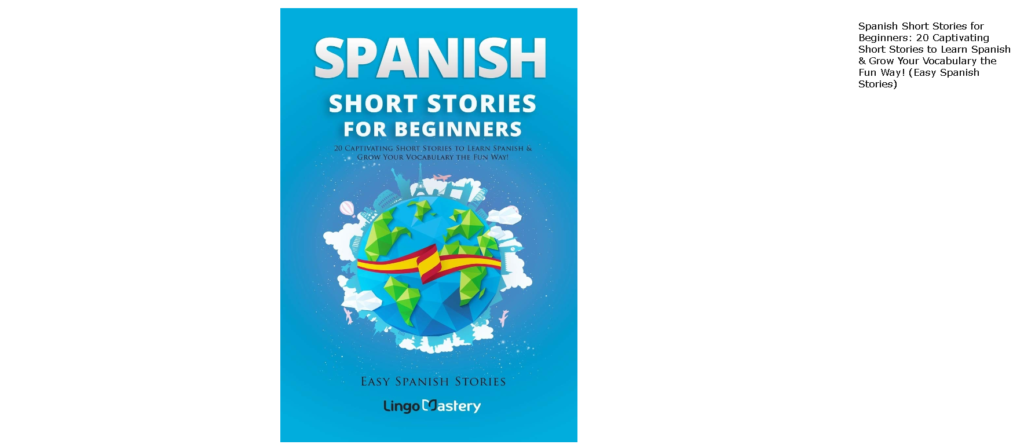
“Spanish Short Stories for Beginners” provides a user-friendly approach to language acquisition through short, easy-to-follow narratives. With a focus on everyday situations, this book helps beginners grasp practical vocabulary and common expressions. The inclusion of comprehension exercises reinforces learning, making it an interactive resource that accelerates language development for those new to Spanish.
8. Learn Spanish with Short Stories for Adult Beginners by Explore ToWin
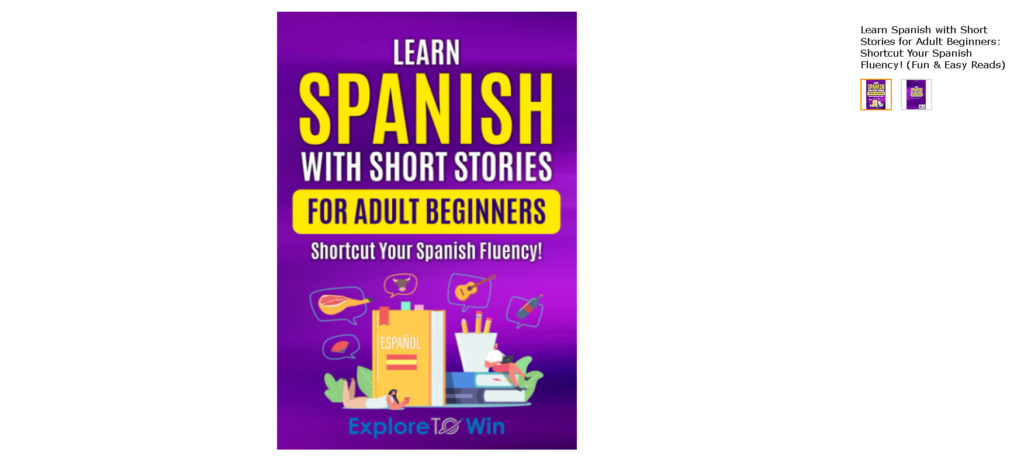
Catering specifically to adult learners, “Learn Spanish with Short Stories for Adult Beginners” combines the allure of storytelling with targeted language exercises. The stories are crafted to be relatable for adults, covering a range of topics that resonate with mature learners. This book ensures that the language-learning journey remains engaging and applicable to real-life conversations for adult beginners.
9. Short Stories in Spanish by John R. King
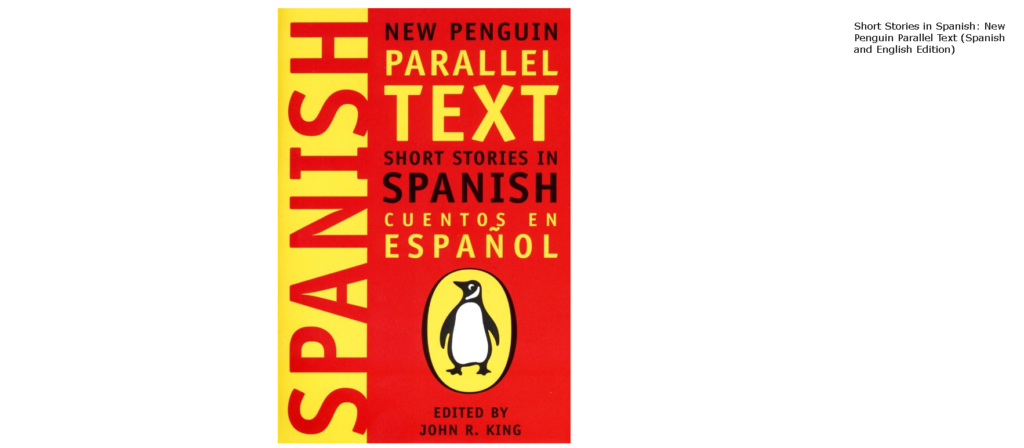
“Short Stories in Spanish” offers a diverse and captivating collection suitable for learners of various levels. Each story is designed to provide an immersive experience, exposing readers to different themes and language nuances. This book serves as a versatile resource, making it one of the best books for learning Spanish for those seeking a broad yet accessible approach to learning Spanish through short stories.
10. Short Stories in Spanish for Intermediate Learners by Olly Richards
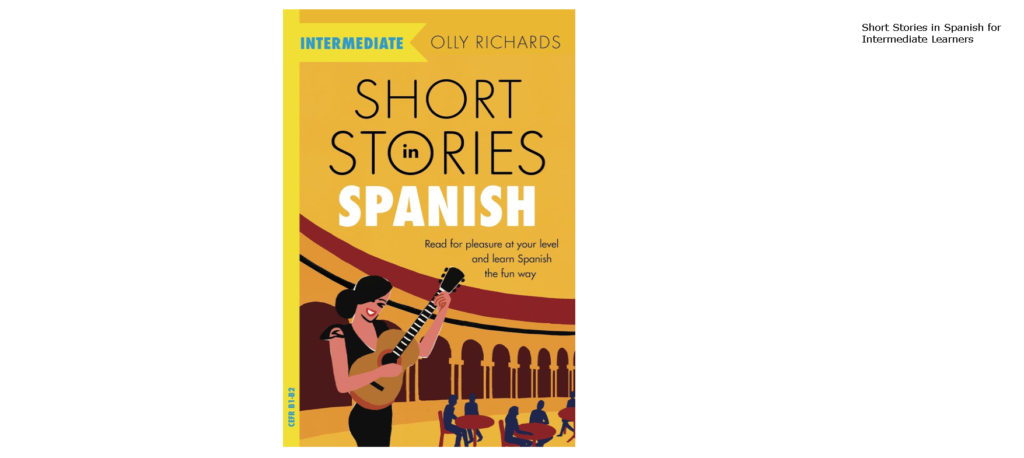
For those advancing to an intermediate level, “Short Stories in Spanish for Intermediate Learners” presents more complex narratives. Challenging readers with nuanced language use, the book bridges the gap between beginner and advanced proficiency. This collection offers a stepping stone for learners looking to enhance their language skills and delve deeper into the intricacies of Spanish storytelling.
Best Books for Learning Spanish for Children
Introducing children to the world of Spanish can be an exciting and enriching experience, and the right books can make this journey both educational and enjoyable. Here are five highly recommended books designed to make learning Spanish a fun adventure for children:
11. Complete Book of Starter Spanish Workbook for Kids by Thinking Kids
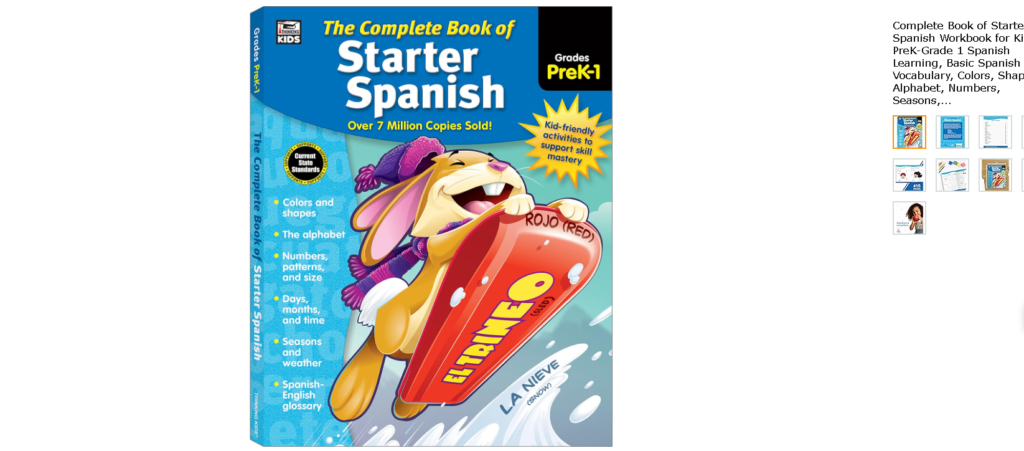
The “Complete Book of Starter Spanish Workbook for Kids” is a fun and colorful book made for kids who are just starting to learn Spanish. It has lots of pictures and activities to help them understand and enjoy the basics of the Spanish language.
12. Spanish-English Picture Dictionary by Catherine Buzzone
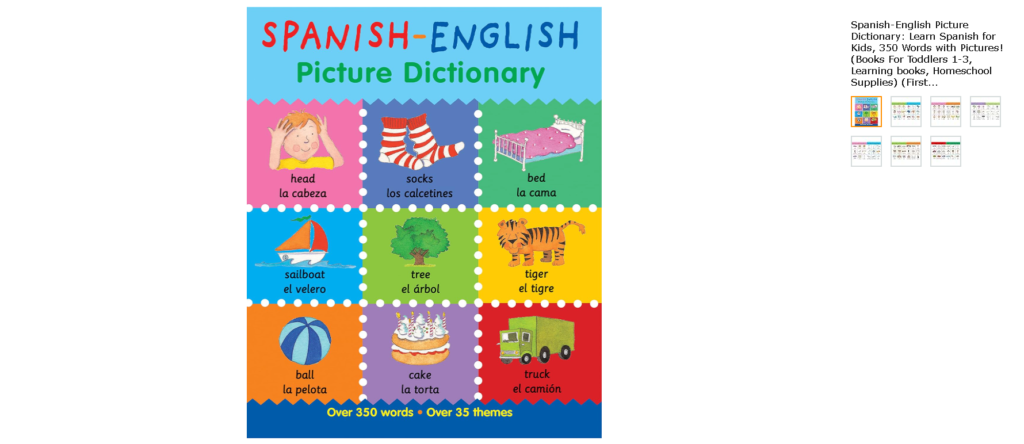
The “Spanish-English Picture Dictionary” is like a colorful picture book that helps kids learn words in both Spanish and English. With lots of pictures, this dictionary makes learning new words a fun experience for kids. It shows them what words mean and helps them remember better.
13. Complete Spanish for Middle & High School Students by Explore ToWin
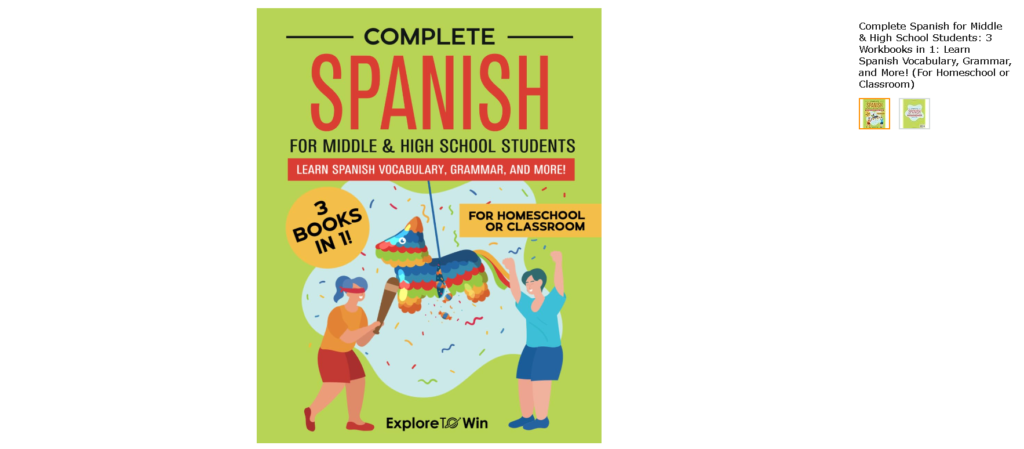
“Spanish Middle / High School” is a book for older kids in middle or high school. It talks about more advanced Spanish words and grammar in a way that’s interesting for students. This book helps kids in middle and high school learn more about the Spanish language.
14. The Everything Kids’ Learning Spanish Book by Cecilia I. Sojo

“The Everything Kids’ Learning Spanish Book” is a book that makes learning Spanish like playing a game. It has puzzles, games, and activities that make learning fun for kids. This book is for kids of different ages and helps them understand Spanish words and phrases in a playful way.
15. Let’s Learn Spanish: First Words for Everyone by Aurora Cacciapuoti
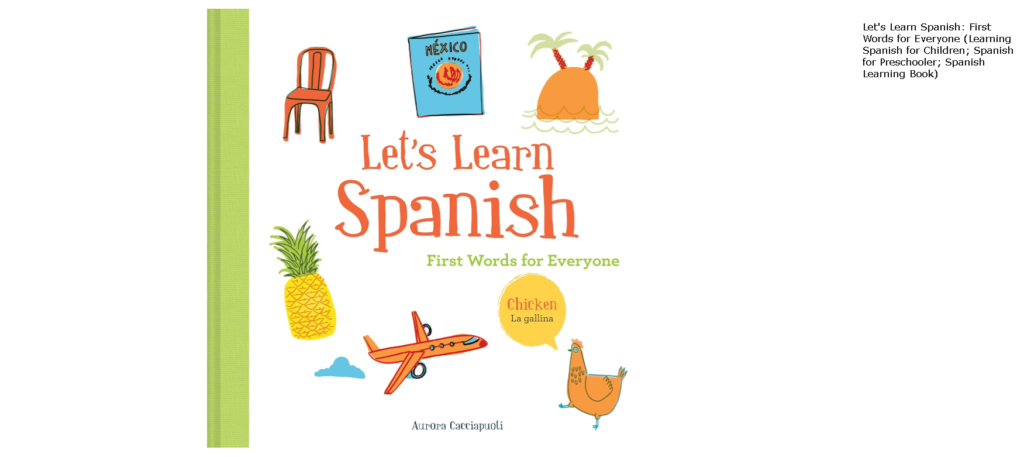
“Let’s Learn Spanish: First Words for Everyone” is a book for the youngest kids. It has simple pictures and words to help toddlers and preschoolers learn their first words in Spanish. This book is made for little ones, making it easy and fun for them to start learning Spanish.
Best Books for Learning Spanish Through Workbooks
Learning Spanish through workbooks offers a structured and hands-on approach, allowing learners to practice and reinforce language skills in a systematic manner. Here are six top-notch workbooks designed to enhance your Spanish proficiency:
16. Complete Spanish Workbook for Adult Beginners by Explore ToWin
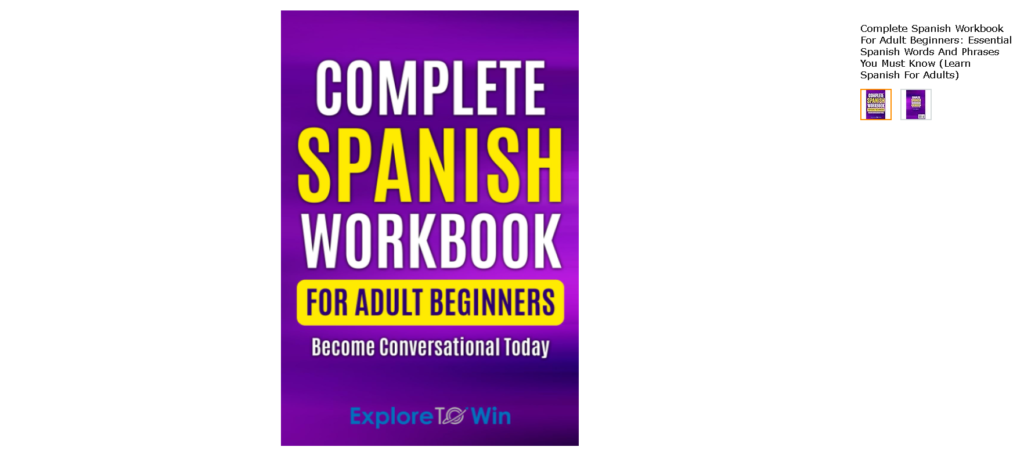
This workbook is for grown-ups who are just starting to learn Spanish. It helps them with grammar, vocabulary, and practical exercises in a clear and organized way. The workbook makes learning Spanish easy and enjoyable for adults.
17. The Complete Spanish Workbook for Kids by Viviana Lopera
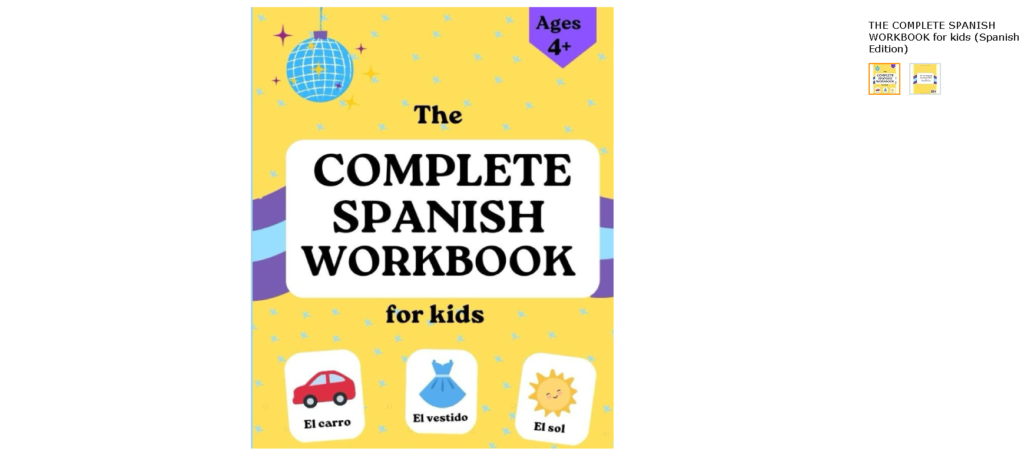
Made for kids, this workbook is a mix of fun activities and learning. It teaches children basic words and simple phrases in Spanish through engaging exercises. This workbook makes it fun for kids to build a strong foundation in Spanish.
18. No Nonsense Spanish Workbook by Caitlin H. Cuneo
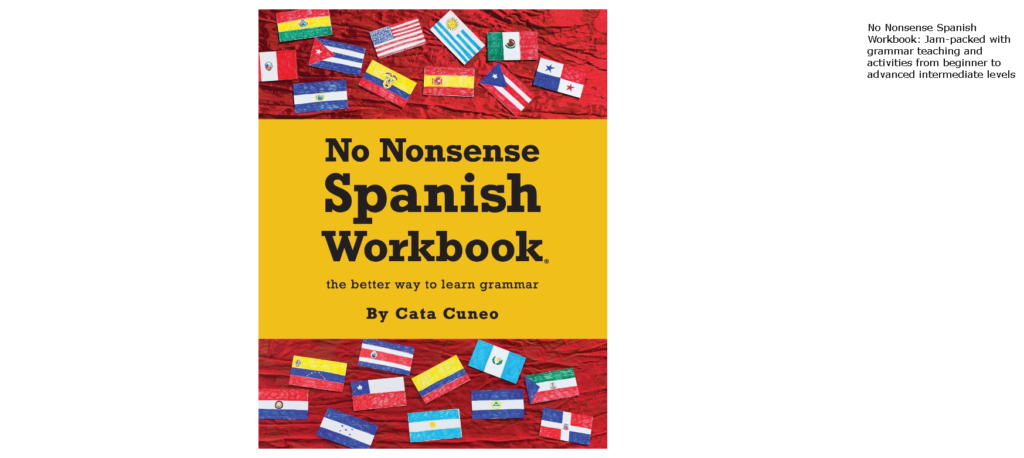
Just like its name suggests, this workbook is straightforward. It focuses on practical language use, with exercises that show how to use Spanish in real-life situations. It’s perfect for learners who want a simple and effective way to master Spanish.
19. Spanish Verbs Made Easy Workbook by Lingo Mastery
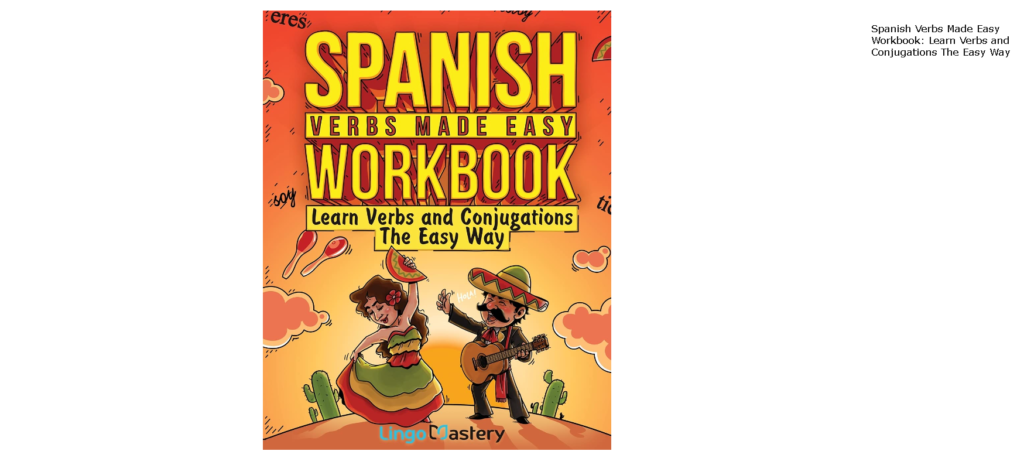
This workbook is all about making Spanish verbs easy to understand. It helps learners with exercises and clear explanations, making it simpler to grasp how to use verbs in Spanish confidently.
20. Learn Spanish: Grammar Workbook for Adult Beginners by Speak Abroad Academy
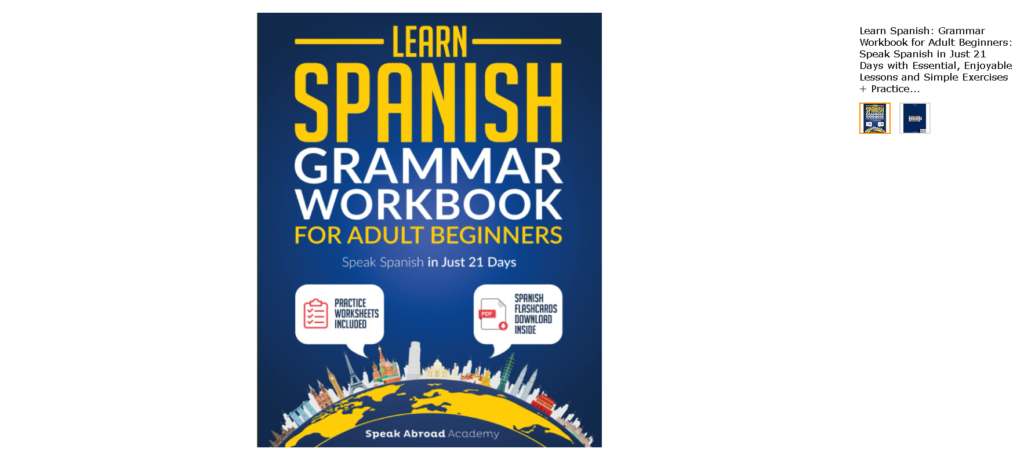
Made for adults who want to focus on grammar, this workbook explains grammar in a clear and easy way. It’s a valuable resource for adults who want to get better at Spanish by practicing grammar.
21. Spanish Workbook for Middle School and High School Students by My Daily Spanish
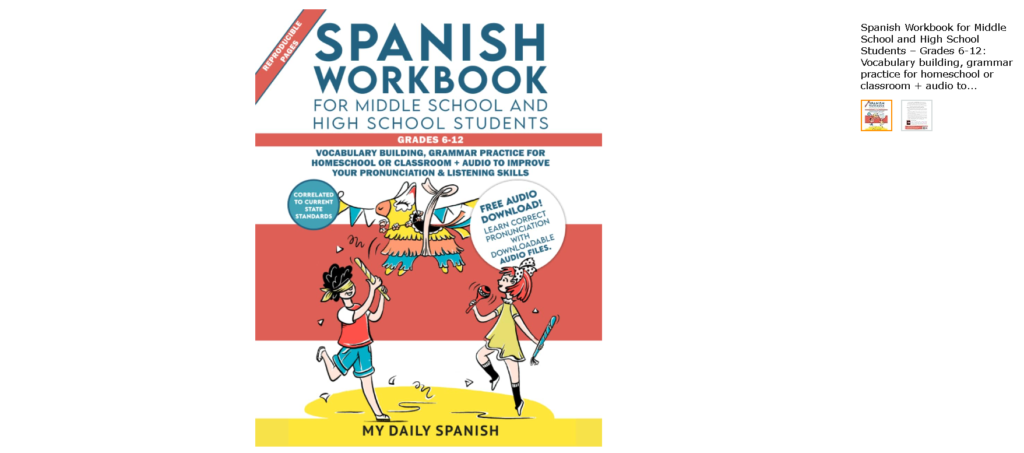
This workbook is for older students in middle and high school. It covers various language skills like grammar and vocabulary, making it a helpful resource for students on their Spanish language journey.
How to Choose Your Best Books for Learning Spanish?
Choosing the best books for learning Spanish involves considering a few key factors to tailor your selection to your needs:
- Proficiency Level: Assess your current proficiency level in Spanish. Beginners should opt for introductory materials, while intermediate and advanced learners can choose books that challenge and expand their knowledge.
- Learning Style: Identify your preferred learning style—whether it’s interactive learning with exercises or immersive learning through stories and dialogues. Select books that align with your preferred approach for a more effective learning experience.
- Content Type: Consider the type of content that suits you best, be it traditional textbooks, workbooks, phrasebooks, short stories, or thematic books focusing on specific aspects like grammar or vocabulary.
- Reviews and Recommendations: Check reviews and seek recommendations from fellow language learners. Insights from online platforms, forums, and bookstores can guide you toward effective and user-friendly language learning resources.
- Cultural Content: If cultural understanding is important to you, choose books that integrate cultural elements from Spanish-speaking regions. This can enhance your appreciation of the language and its context while making the learning experience more enriching.
Learning Spanish Through Apps VS Podcasts VS Books
When it comes to learning Spanish, there are various avenues to explore, including apps, podcasts, and books. Each has its advantages, and the choice depends on your learning preferences and goals.
1. Learning Spanish Through Apps:
Spanish learning apps offer a dynamic and interactive way to acquire language skills. They often feature gamified elements, quizzes, and real-time feedback, making learning engaging and personalized.
Apps are convenient for on-the-go learning, allowing you to practice Spanish whenever and wherever you have your device.
With a variety of apps catering to different learning styles, you can find one that aligns with your preferences, whether you prefer visual, auditory, or interactive learning experiences.
Check Out My Best Spanish Learning Apps article to see more!
2. Learning Spanish Through Podcasts:
Podcasts provide an auditory learning experience, allowing you to immerse yourself in the Spanish language through listening.
Podcasts often cover a range of topics, from language lessons to cultural insights and real-life conversations. They are a flexible option, as you can listen while commuting, exercising, or doing household chores.
Additionally, podcasts expose you to different accents and speaking styles, contributing to improved listening and comprehension skills.
Check Out My Best Spanish Learning Podcasts article to see the best ones!
3. Learning Spanish Through Books:
Books offer a traditional yet effective approach to learning Spanish. They provide a structured and comprehensive learning experience, covering grammar, vocabulary, and cultural aspects.
Books are particularly beneficial for visual learners who prefer a tangible resource for study.
With a wide array of language learning books available, you can choose materials that match your proficiency level and learning goals, ranging from beginner-friendly guides to advanced literature.
Choosing the Right Blend:
The optimal approach to learning Spanish often involves a combination of these resources. Apps offer interactivity and immediate feedback, podcasts enhance listening skills and cultural understanding, while books provide a solid foundation in grammar and vocabulary. By combining these learning tools, you can create a well-rounded and personalized language learning experience.
Wrap Up
Learning Spanish can be really fun, especially when you have the right books by your side. Whether you’re just starting or you’ve been learning for a while, there’s a book for every step of your journey.
Remember, it’s important to pick books that match how you like to learn and your skill level. There are books with activities, stories, and even ones made just for kids. Mixing things up with apps or podcasts can make your learning adventure even more interesting.
Learning a language takes time, so don’t rush. Enjoy the process, practice regularly, and celebrate your progress. Whether you’re using apps, listening to podcasts, or reading books, the main thing is to keep going.
So, as you continue your journey to learn Spanish, have fun, explore, and enjoy the rich world of language and culture that opens up to you.
Frequently Asked Questions (FAQ)
1. How do I choose the right Spanish learning book for my level?
Consider your proficiency level – beginner, intermediate, or advanced. Read reviews and recommendations from learners with similar levels. Look for books specifically designed for your proficiency stage.
2. Are there books that cater to different learning styles?
Yes, there are books for visual learners, auditory learners, and interactive learners. Spanish learning Apps and workbooks often cater to interactive learners, while Spanish podcasts are great for auditory learners.
3. Can I use Spanish learning apps along with books?
Absolutely! Combining the best Spanish learning apps and books can provide a well-rounded learning experience. Apps offer interactive elements, while books provide in-depth explanations and exercises. Check my best Spanish learning Apps article to see the best!
4. Are there Spanish learning books suitable for children?
Yes, there are many books designed specifically for children, featuring engaging activities and age-appropriate content. Look for colorful workbooks, picture dictionaries, and interactive stories for kids.
5. How can I find the best Spanish learning podcasts?
Check online platforms and forums for recommendations. Check out my article on “Best Spanish Learning Podcasts” for a curated list.
6. What if I prefer a traditional learning approach?
If you prefer a traditional approach, opt for comprehensive textbooks or grammar workbooks. Look for books that cover grammar, vocabulary, and cultural aspects in a structured manner.
7. Can I learn Spanish solely through books, or should I use other resources?
While books are valuable, a combination of resources like apps and podcasts can enhance your learning experience. Experiment with a blend of resources to find what works best for you.
8. How long does it take to become fluent in Spanish using books?
Fluency varies for each individual, and there’s no fixed timeline. Consistent practice, regular exposure, and dedication contribute to faster progress.
9. Are there books that focus on Spanish cultural aspects?
Yes, many books integrate cultural elements, providing insights into Spanish-speaking regions’ traditions and lifestyles. Look for books that explore cultural aspects alongside language learning.
10. What if I don’t have much time to study?
Choose resources that fit your schedule, such as apps or podcasts that you can use during daily activities. Short, focused study sessions with books can also be effective. Consistency matters more than duration.
Remember, the key is to find what works best for you and enjoy the learning process.

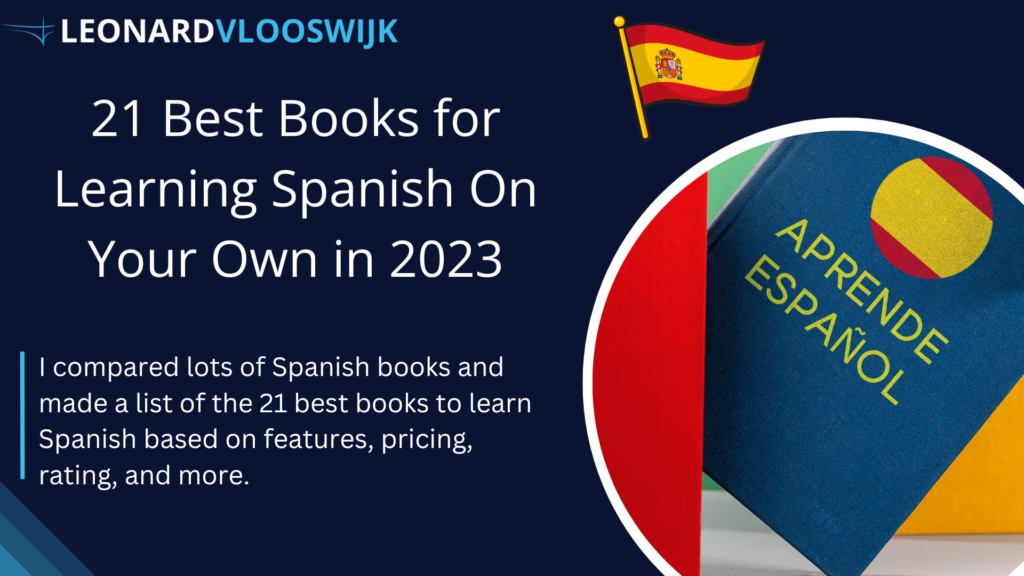
Pingback: Pimsleur Review: Is It Truly Worth It In 2024? - Leonard Vlooswijk